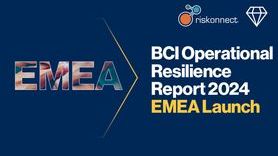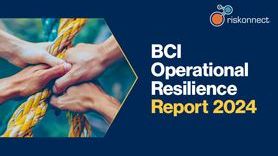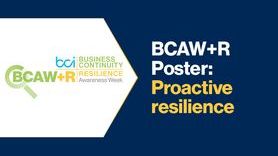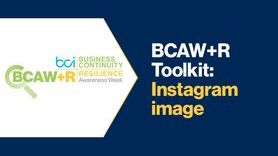Latest BCI report shows significant growth in operational resilience uptake
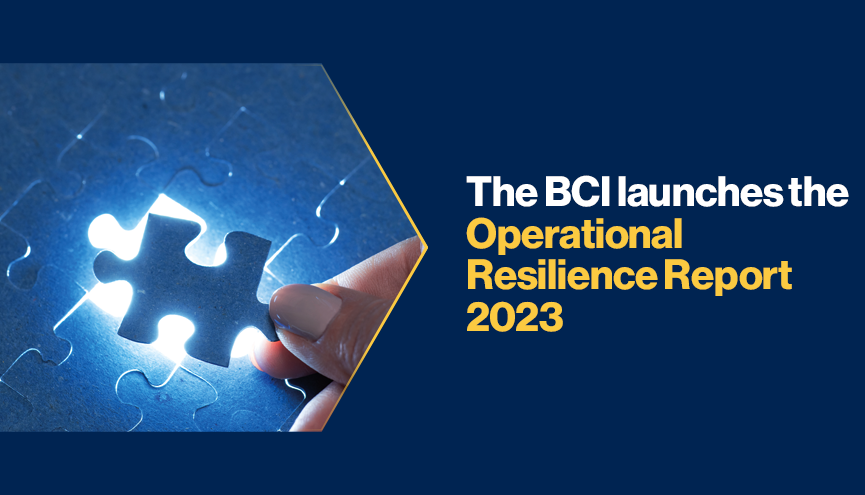
The BCI publishes regular in-depth reports looking into resilience related subjects and has just released its latest publication, which explores developments in the area of operational resilience.
Sponsored by Riskonnect, the BCI Operational Resilience Report 2023 provides the results from a global survey of resilience professionals and from various detailed interviews with professionals working in operational resilience and business continuity.
Operational resilience has garnered considerable attention as of late, driven by various regulators in the finance and banking sectors. However, the BCI’s new report shows significant growth across all industry sectors. More than three-quarters (76.6%) of surveyed organizations reported that they have an operational resilience programme in place or are actively building one. Of these, only 40.6% were banking and finance organizations.
When asked about the reasons for the move to operational resilience, the majority (87.3%) of respondents from the banking and finance sector stated that regulatory requirements are their organization’s main motive; however, for those representing unregulated organizations the main reason for implementing operational resilience is ‘for good practice purposes’.
Operational resilience strategy is being led by senior management in most organizations, with the top-three types of executives taking responsibility for operational resilience being the chief executive officer (22.6%), the executive director (14.3%), and the chief operations officer (12.7%). Day-to-day responsibility for operational resilience is most often placed with a business continuity manager (20.6%), followed by the head of resilience (11.8%), or a dedicated operational resilience manager (10.6%).
Business continuity and operational resilience: where are the boundaries?
The report identifies significant differences in opinions amongst professionals about how operational resilience and business continuity fit together, with 42% of respondents stating that business continuity and operational resilience are synonymous within their organizations and 45.6% saying that there is an overlap between business continuity and operational resilience, but the differences have not been clearly defined yet. Overall, 66.5% of respondents considered that business continuity is a part of operational resilience. However a majority (58.3%) of respondents outside the banking sector believe that business continuity is all their organization currently needs.
Challenges to developing operational resilience programmes
Having operational resilience at the heart of an organization’s culture is essential to ensuring true adherence to best practice, but this is also the top challenge identified by respondents. 52.4% said that ‘Embedding operational resilience into the fabric of the organization’ was a major issue, followed closely by ‘Not having the headcount and/or staff time to implement a realistic policy’ at 50.9%: organizations are struggling to attract individuals with specific knowledge or operational resilience experience. These challenges were followed by two tactical difficulties: ‘Understanding, monitoring, and managing supply chain risks’ (37.9%); and ‘Addressing legacy infrastructure’ (35.9%).
Commenting on the report results, Rachael Elliott, Head of Thought Leadership, BCI said:
“The survey results clearly show advances made in the uptake of operational resilience around the world; and it is interesting to see that it seems to be being perceived by many as a best practice that even non-regulated organizations should comply with. The positioning of operational resilience and business continuity remains fluid, and the BCI looks forward to facilitating the debate about this and helping to provide the clarity that the profession needs.”
Brian Zawada from report sponsors, Riskonnect commented:
“This important survey aligns to what I’m seeing and experiencing every day, which is the use of operational resilience concepts becoming more mainstream, both in and outside of financial services globally. Regardless of how an organization or professional defines business continuity or operational resilience, it’s fantastic to see adoption and maturity increase, all benefiting the market, customer and organization.”












